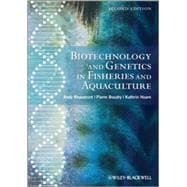
| Preface to the second edition | p. ix |
| Acknowledgements | p. xi |
| What is genetic variation? | p. 1 |
| Deoxyribose nucleic acid | p. 1 |
| Ribose nucleic acid | p. 5 |
| What is the genetic code? | p. 7 |
| Protein structure | p. 7 |
| So what about chromosomes? | p. 9 |
| How does sexual reproduction produce variation? | p. 11 |
| Mitochondrial and chloroplast DNA | p. 16 |
| How can genetic variation be measured? | p. 19 |
| DNA sequence variation | p. 19 |
| DNA fragment size variation | p. 36 |
| Protein variation | p. 44 |
| Phenotypic variation | p. 47 |
| Genetic structure in natural populations | p. 49 |
| What is a population? | p. 49 |
| How are allele frequencies estimated? | p. 51 |
| What is the relationship between alleles and genotypes? | p. 51 |
| How do allele frequencies change over time? | p. 53 |
| How does population structure arise? | p. 54 |
| How are genetic markers used to study population structure? | p. 55 |
| Levels of genetic differentiation in aquatic organisms | p. 60 |
| Potential problems with allozymes and coding markers | p. 61 |
| mtDNA variation | p. 63 |
| Microsatellite variation | p. 66 |
| Population structure in the flat oyster | p. 68 |
| Mixed stock analysis (MSA) | p. 73 |
| Genetics of population size in conservation and aquaculture | p. 77 |
| Genetics of small population size in the wild | p. 78 |
| Genetic markers in conservation | p. 82 |
| Genetics of small population size in the hatchery | p. 85 |
| Is there evidence of loss of genetic variation in the hatchery? | p. 87 |
| How does hatchery propagation affect heterozygosity? | p. 89 |
| Genetic markers for identification of hatchery product | p. 93 |
| Genetic markers for pathogen identification | p. 94 |
| Genetic variation of traits | p. 99 |
| Qualitative traits | p. 99 |
| Quantitative traits | p. 105 |
| What kinds of traits are important? | p. 106 |
| Variation of a quantitative trait | p. 106 |
| How can we estimate narrow-sense heritability? | p. 109 |
| Realised heritability | p. 115 |
| Correlated traits | p. 118 |
| What types of artificial selections are there? | p. 118 |
| Setting up a breeding programme | p. 122 |
| Inbreeding, cross-breeding and hybridisation | p. 123 |
| Current status of selective breeding programmes in aquaculture | p. 126 |
| From genetics to genomics | p. 129 |
| What is the genome? | p. 129 |
| Genome mapping | p. 130 |
| Whole genome sequencing: the 'big picture' | p. 137 |
| QTL mapping | p. 137 |
| Application of QTLs in aquaculture and fisheries management | p. 138 |
| Marker-assisted selection (MAS): from QTLs to genomic selection | p. 139 |
| Transcriptomics | p. 139 |
| Triploids and beyond: why manipulate ploidy? | p. 145 |
| How is it done? | p. 146 |
| Production of gynogens and androgens | p. 148 |
| Identification of ploidy change | p. 149 |
| Value of Triploids | p. 151 |
| Tetraploids | p. 155 |
| Gynogens and androgens | p. 157 |
| Genetic engineering in aquaculture | p. 161 |
| The DNA construct | p. 162 |
| Transgene delivery | p. 164 |
| Transgene integration | p. 168 |
| Detecting integration and expression of the transgene | p. 169 |
| Results of transgenesis efforts in fish | p. 171 |
| So much for transgenics-what about cloning? | p. 176 |
| Genethics | p. 176 |
| Glossary | p. 181 |
| Index | p. 193 |
| Table of Contents provided by Ingram. All Rights Reserved. |
The New copy of this book will include any supplemental materials advertised. Please check the title of the book to determine if it should include any access cards, study guides, lab manuals, CDs, etc.
The Used, Rental and eBook copies of this book are not guaranteed to include any supplemental materials. Typically, only the book itself is included. This is true even if the title states it includes any access cards, study guides, lab manuals, CDs, etc.